|
|
|||
|
THIS WEEK at HILTON POND (Back to Preceding Week; on to Next Week) |
|
Only a few places remain for our upcoming |
|
YOUR HEAD BONE CONNECTED
TO YOUR NECK BONE . . . In our discussion of last week's "natural calendar," we mentioned one chore we tackle as the new year begins is checking/cleaning/repairing Wood Duck nest boxes installed a quarter century ago at Hilton Pond Center. Taking advantage of this week's mild weather, we floated across the pond on a raft to each box, replacing old nesting material with new wood shavings that will cushion and insulate eggs in 2007. As usual, we found a few unhatched eggs in the first two nest boxes but were quite surprised when instead of eggs the third held dried skeletal remains of an adult Wood Duck. This bird likely was a female that died in the artificial cavity before she started laying early last spring, or perhaps while roosting during hot summer months. The skeleton was stripped of meat and had settled into old shavings--no doubt due to frenetic activity of Carrion Beetles, dermestids, and fly larvae--and the "head bone" was lying on top, no longer "connected to the neck bone."
All text & photos © Hilton Pond Center We dumped the soiled nest box contents into a bucket, except for the skull and lower mandible (above). These we placed in a sweatshirt pocket for safe transport back to the Center's office, where we set up our camera and light table as we pondered the duck's fate. We also started thinking about other animal remains we've discovered on the property through the years. Several--such as the Wood Duck--were birds, but there have been mammals and a reptile or two. For some we found only their skulls, long after scavengers and decomposers removed all vestiges of soft tissue and other edible parts. Skulls by their very make-up are destined to last better than most skeletal structures, and their three-dimensionality probably makes them more easily seen and collected than other bones. For us, animal skulls are fascinating in form and function, so we've amassed a little collection that sits on a shelf in our office. If these skulls could talk, they'd have tales to tell, but since they can't we'll say a few words on their behalf.
The Wood Duck artifact is unlike other bird skulls we've found. From the side (top photo) it looks somewhat like a "typical" songbird skull--large cranium with huge eye sockets and long upper mandible--but a top view (just above) shows its unique waterfowl characteristic: The mandible is wide (and flat) and not particularly tapered. This flat bill is used for straining food from water; woodies mostly eat aquatic vegetation such as Duckweed but consume everything from acorns to tadpoles. We might mention we were surprised at how small the Wood Duck's skull turned out to be; when alive, this bird looks too big to us to have a skull only 3" long.
A Blue Jay that hit a neighbor's window lay in tall grass all summer as it was stripped clean of meat by ants and other insects. The remaining skull (above) was in pretty good shape and showed a form quite different from that of the Wood Duck. A jay's skull is designed, in part, for flight, as indicated by its streamlined shape from both top and side. The Blue Jay's bill is quite stout--capable, in fact, of breaking open a pecan; broad at the base, it tapers to a point that may even have a little hook on the end. Having banded several thousand of these bright blue corvids, we can attest that a jay in the hand uses the little hook to its advantage.
Although one does not come across road-killed Green Herons very often, we found one hit by a car several summers ago in rural York County. The body was mangled but we managed to salvage the head, which we brought back to Hilton Pond Center; there we placed it on an ant hill and covered it with an inverted flower pot we weighted with a rock to deter mammalian scavengers. Within a few weeks the ants had done their work and we had another skull for our collection. Although the main part of any bird's bill is white bone, the heron's looks black because it's still covered by a sheath of keratin--a complex protein polymer that also makes up toenails and claws. The sheath typically contains pigment such as melanin (as in the heron) or carotene (as in the bright orange bill of a Northern Cardinal). Although the sheath isn't edible to vertebrates, it will decompose faster than bone, and most bird skulls we find have already lost their sheaths. Incidentally, the Green Heron uses its bill--long, tapered, and stilletto-sharp--to grab small fish and invertebrates, not to stab them. Wading birds WILL stab at potential predators, which we found out the hard way as we removed a Green Heron from one of our mist nets. (Had we not turned just in time, we might have lost an eye.)
And speaking of eyes, nothing illustrates just how big a bird's eye can be than the skull of a raptor, in this case a Barred Owl (above). Most birds have eyes that are more or less on the sides of their heads, meaning they have to look at something up close with one eye or the other. For birds of prey--and especially owls--the eyes are closer to the front of the head, giving them better binocular vision. In hawks and owls, the eyes are especially huge, allowing them to see quite well at a distance--not because they have "telescopic" vision but because their retinas are so broad and laden with receptor cells that their visual acuity is much greater than that of humans. Thus, they can see smaller things over a greater distance. The owl's skull also betrays its predatory lifestyle; there's no doubt the massive decurved beak illustrated above is adapted for tearing flesh. One other thing about eyes and bird skulls: None of the specimens from our skull collection is truly complete. Each does have a cranium and a lower mandible, and for a mammalian skull this would be all the parts (plus teeth) that might be expected.
Our last skull happens to BE from one of those eye-plucking scavengers, in this case a Turkey Vulture (above). In a complex example of a food chain, this particular bird was hit by a car one spring while dining on a road-killed Raccoon on the highway in front of Hilton Pond Center. The 'coon wasn't in very good shape and we let it be, but the vulture was pretty much intact; we dragged it into some woods on our property and let nature take its course. Several months later we checked and found nothing but a few black feathers and part of a skeleton; fortunately the skull--lower mandible still attached--was undamaged. The decurved bill of the Turkey Vulture isn't nearly as strongly hooked as that of the Barred Owl, but enough so that it's easy to understand why early taxonomists thought vultures were related to other diurnal raptors such as hawks, eagles, and falcons. One interesting avian skeletal component visible in the bottom view of the vulture's skull is the hyoid, the dagger-shaped bone pointing toward the right. This structure--well-developed and prominent in most birds--supports the tongue; the less-obvious human hyoid is horseshoe-shaped and sits atop the trachea. Our photo of the underside of the Turkey Vulture skull also shows the foramen magnum, the large opening through which the spinal nerve passes. In birds this opening points downward as it does in humans, allowing both to stand bipedally, as the "TV" does in John James Audubon's rendering (above right). In most mammals and in reptiles and amphibians the foramen magnum points to the rear and is adapted to four-footed locomotion. We could probably write a lot more about these amazing bird skulls, but for now we have to get back to cleaning out the remaining three Wood Duck boxes. We saw a pair of woodies on Hilton Pond earlier in the week, and we wouldn't want to keep them waiting if they decide to set up housekeeping.
For size comparison, our five bird skulls are shown together (above, left to right): Blue Jay, Wood Duck, Green Heron, Barred Owl, and Turkey Vulture. The heron skull is 4.2" long. All text & photos © Hilton Pond Center NOTE: The title of this week's installment comes from one of our favorite Negro spirituals, which we sang for our high school biology students to bring a change of pace to anatomy lessons. The lyrics--not quite anatomically correct--are based on Ezekiel 37:14, where the prophet visits the Valley of Dry Bones and brings them to life by invoking the name of God. Some recent versions of the song delete biblical references and/or modernize the black dialect. The best traditional rendition we know was recorded in 1941 by the Delta Rhythm Boys. DEM DRY BONES Ezekiel connected dem dry bones Well, your toe bone connected to your foot bone, Dem bones, dem bones gonna walk aroun' Well, your head bone connected from your neck bone, Chorus
Comments or questions about this week's installment?
Thanks to the following fine folks for recent gifts in support of Hilton Pond Center for Piedmont Natural History and/or Operation RubyThroat: The Hummingbird Project. Your tax-deductible contributions allow us to continue writing, photographing, and sharing "This Week at Hilton Pond."
"This Week at Hilton Pond" is written & photographed You may wish to consult our Index of all nature topics covered since February 2000. You can also use our on-line Hilton Pond Search Engine at the bottom of this page. For a free, non-fattening, on-line subscription to |
|
Make direct donations on-line through
Network for Good: |
|
|
LIKE TO SHOP ON-LINE?
Donate a portion of your purchase price from 500+ top on-line stores via iGive: |
|
|
Use your PayPal account
to make direct donations: |
|
|
SPECIES BANDED THIS WEEK: * = New species for 2007 WEEKLY BANDING TOTAL YEARLY BANDING TOTAL (2007)
|
NOTABLE RECAPTURES THIS WEEK Dark-eyed Junco (1) Northern Cardinal (1) OTHER SIGHTINGS OF INTEREST --Weather at the Center's been amazingly warm--temps in the upper 60s and lower 70s and not what we expect even with our traditional mid-winter thaw. Jonquils (above left) are blooming two weeks early in many spots where they've pioneered around the property; although they're not native, we let these yellow flowers be since they seem not to be invasive or detrimental to native species.
|
|
|
|
(Back to Preceding Week; on to Next Week) Up to Top of Page Back to This Week at Hilton Pond Center Current Weather Conditions at Hilton Pond Center |
 You can also post questions for The Piedmont Naturalist |
Join the |
Search Engine for |
|
|

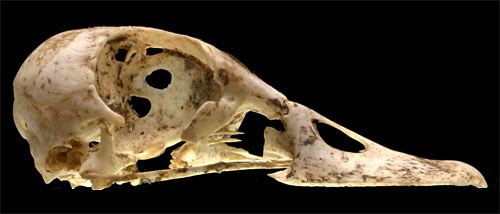

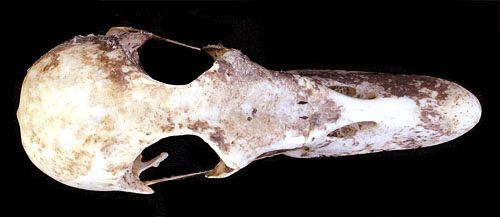
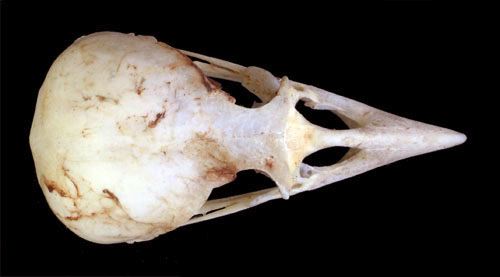
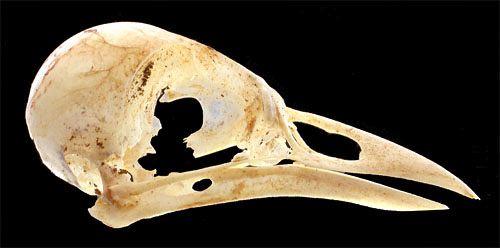


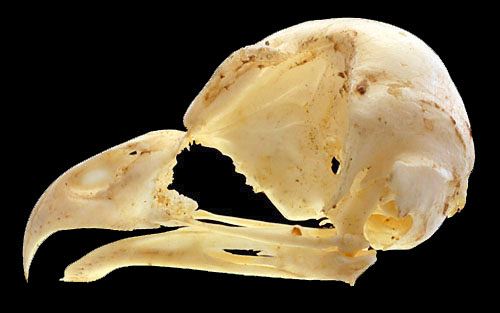
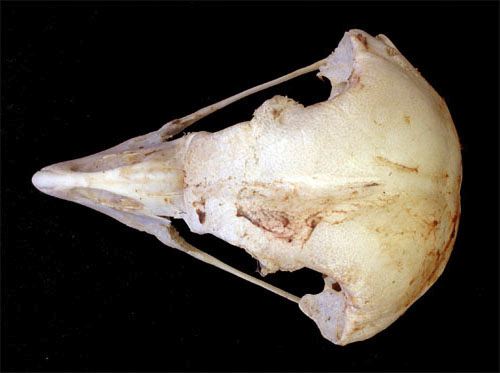

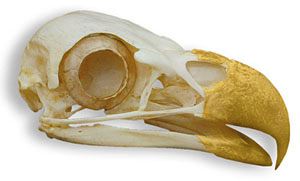 In birds, however, each eye also has 12-15 delicate sclerotic plates--so-called "eye bones" or "ossicles"--shown at left in a Bald Eagle model from
In birds, however, each eye also has 12-15 delicate sclerotic plates--so-called "eye bones" or "ossicles"--shown at left in a Bald Eagle model from 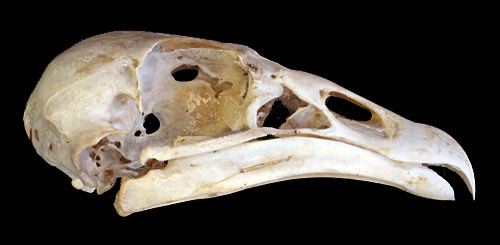

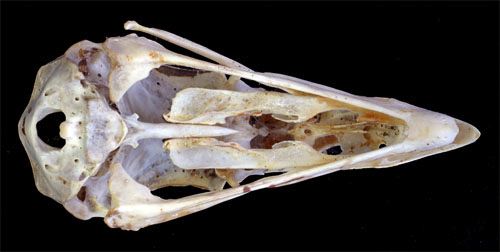
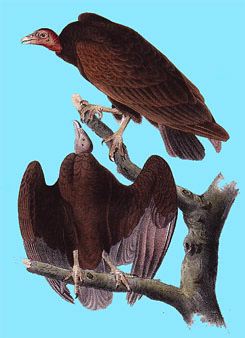 Recent DNA work, however, supports the conjecture that vultures are actually closer to the storks.
Recent DNA work, however, supports the conjecture that vultures are actually closer to the storks.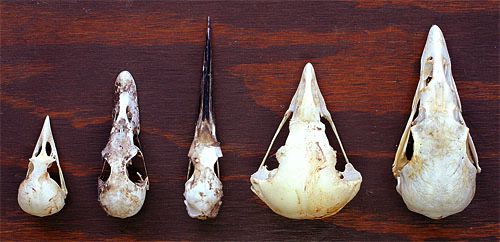


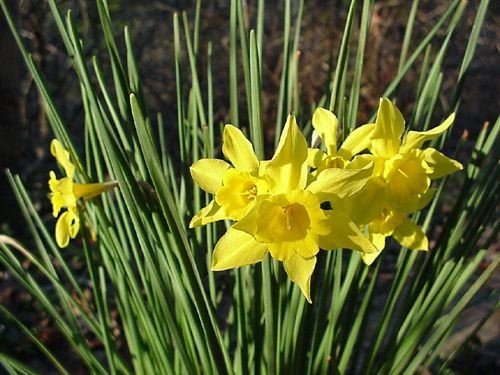
 Oct 15 to Mar 15
Oct 15 to Mar 15